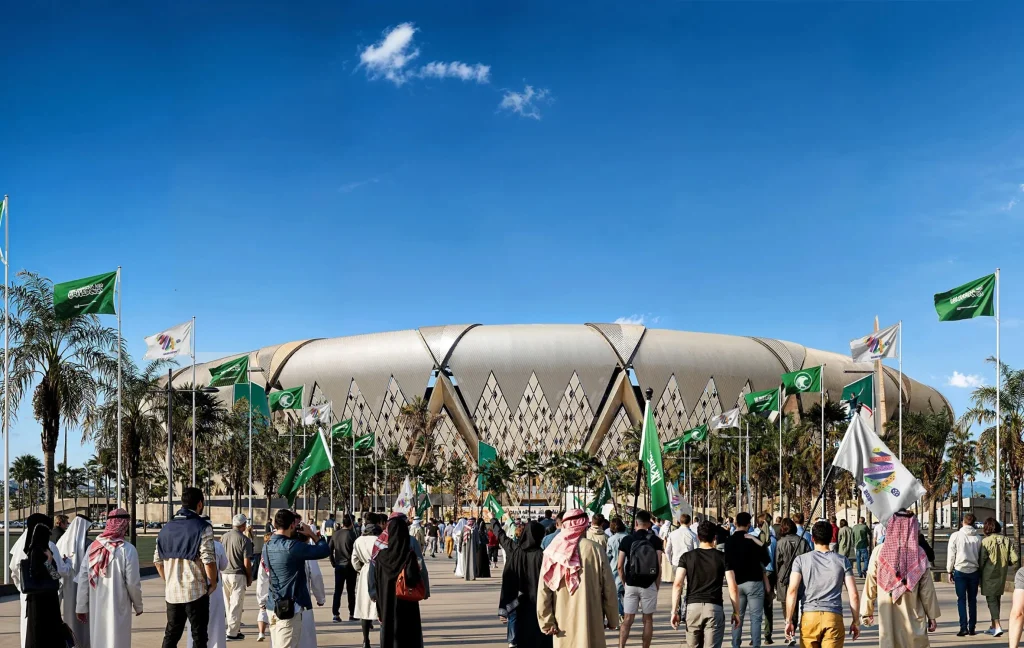
Saudi Arabia’s plan includes 4 existing venues, 3 new stadiums currently under construction, and 8 planned new stadiums for the World Cup 2034. The country’s ongoing strategy for the games involves refurbishment, new construction, or the addition of temporary facilities.
“The bid is based primarily on a desire for growth, growth of people, football, and connections around the world. Hosting the FIFA World Cup is an important step in the growth journey of the sports sector in the Kingdom, which has witnessed great developments and success in recent years,” said Mohammed bin Salman bin Abdulaziz Al Saud, the Crown Prince and Prime Minister of Saudi Arabia.
Saudi Arabia announced that the host cities for the FIFA World Cup 2034 are Riyadh, Jeddah, Al Khobar, Abha, and NEOM as part of their bid for the game. Here is a closer look at each venues.
King Salman International Stadium
Designed by Populous, located in Riyadh, the King Salman International Stadium is planned for completion in 2029. With a capacity of 92,000, it will host the highest match categories, including the opening and final matches of the games. This stadium is set to be a central venue for the event, reflecting Saudi Arabia’s ambition to deliver a world-class tournament experience.
“After the FIFA World Cup 2034, the stadium will become Saudi Arabia’s official national stadium. As the highest seated capacity stadium in Saudi Arabia, it will also attract and accommodate the most significant national occasions, including the largest concerts and sporting events.” according to bid.
King Fahad Sports City Stadium
The King Fahad Sports City Stadium in Riyadh will undergo refurbishment to extend its capacity of 70,200. It was designed by Ian Fraser, John Roberts, Michael K.C. Cheah, and Partners. The stadium originally had a seating capacity of 58,398 spectators and was characterized by a massive, tent-like roof structure. Scheduled for semi-final matches, it is expected to be completed by 2026.
Prince Mohammed bin Salman Stadium
Designed by Populous and set to be completed by 2029, the Prince Mohammed bin Salman Stadium in Riyadh will accommodate 50,000 spectators. This new stadium will host the third-place playoff match of the 2034 World Cup. Designed with modern amenities and fan comfort in mind, it will be a significant addition to Saudi Arabia’s sports infrastructure. Also, it is planned to be the world’s first fully integrated venue with a combined retractable roof, pitch, and LED wall.
Shireen Hamdan, Senior Principal and GM of Populous MENA adds, “We have been able to draw on all our experience in sports and entertainment venues to create this iconic multi-use stadium. The location and design of this unique, futuristic venue will ensure an incredible experience for everyone who visits and uses it.”
Managing Director of Populous, EMEA, Chris Lee, said, “The Prince Mohammed Bin Salman Stadium represents a quantum leap in stadium design and a new generation of digitally-enabled innovation. The level of embedded technology will enable both incredible gaming and entertainment experiences and a new way for fans to watch and enjoy football itself.
New Murabba Stadium
Inspired by the layered overlapping planes and peeling planar texture of the native Acacia tree, the multi-purposed New Murabba Stadium in Riyadh is planned for completion in 2032. With a capacity of 46,010, it will host a Round of 32 matches during the 2034 World Cup. This new stadium will feature advanced facilities and a cutting-edge design, contributing to the tournament’s overall grandeur.
“The New Murabba Stadium embodies our commitment to transforming Riyadh into a global destination for sports and entertainment,” said Michael Dyke, CEO of New Murabba Development Company. “The stadium will not only be a world-class venue for sporting events but also a vibrant community hub that enhances the quality of life for residents and visitors alike.”
ROSHN Stadium
The ROSHN Stadium in Southwest Riyadh, with a capacity of 46,000, is scheduled for completion in 2032. It is set to host Round of 32 matches in the 2034 World Cup. The stadium’s design and construction will focus on providing a premium experience for both players and fans, aligning with the event’s high standards.
“ROSHN Stadium embodies ROSHN’s strategic transformation as a multi-asset class developer. We are proud to undertake this ambitious project, which will contribute to improving the quality of life and supporting economic growth in line with Saudi Vision 2030 while providing a unique gathering place in Riyadh and enhancing the Kingdom’s attractiveness to host international events and sporting competitions,” said Dr. Khalid Johar, Acting CEO of ROSHN Group.
Prince Faisal bin Fahd Sports City Stadium
The Prince Faisal bin Fahad Sports City Stadium in Riyadh, currently under construction and expected to be completed by 2027, will accommodate 46,865 spectators. It will be a venue for the Round of 32 matches in the 2034 World Cup and bid to host the 2027 Asian Cup. The stadium aims to integrate modern architecture with functional sports facilities.
South Riyadh Stadium
The South Riyadh Stadium, planned to be ready by 2032, will host Round of 32 matches. With a gross capacity of 47,060, it is set to be one of the key venues for the 2034 World Cup. Its design will emphasize accessibility and fan engagement, ensuring a memorable matchday experience.
“After the FIFA World Cup 2034™, the venue will be home to a professional football club and host major sporting and entertainment events. The precinct will further contribute to a legacy of community engagement, ensuring that the stadium will be a cherished landmark for Wadi Namar.”
King Saud University Stadium
Hashem Contracting Company commissioned the construction of King Saud University Stadium based on designs by Michael KC Cheah and his wife, Steph. The stadium, an existing venue in Riyadh, will undergo refurbishment to be ready for the 2034 World Cup. With a capacity of 46,319, it will host Round of 32 matches by 2032. The upgrades will focus on enhancing spectator comfort and modernizing the stadium’s facilities.
King Abdullah Sports City Stadium
Designed by Arup and located in Jeddah, the King Abdullah Sports City Stadium is an existing venue with a capacity of 58,432. The KSA Stadium was initially built in 2014 and is scheduled for refurbishment and completion by 2032; it will host quarter-final matches of the 2034 World Cup. The renovation will ensure it meets the requirements for hosting high-stakes international matches.
As the second biggest in Saudi Arabia, after Riyadh’s King Fahd Stadium, it also hosted matches of the 2023 FIFA Club World Cup.
Arup incorporated geometric patterns inspired by Islamic culture to define the stadium’s appearance. They utilized the traditional mashrabiya screens, which offer privacy and shade while allowing ventilation. Given the hot climate for most of the year, it was essential to find the right balance for shading and ventilation.
Qiddiya Coast Stadium
The Qiddiya Coast Stadium in Jeddah is initially as part of Qiddiya Coast Development and planned for completion in 2032, will have a capacity of 46,096. It will host Round of 16 matches during the 2034 World Cup. The stadium will feature innovative design and state-of-the-art facilities, enhancing the fan experience and supporting the event’s logistical needs.
Jeddah Central Development Stadium
The Central Development Stadium in Jeddah, which will have a capacity of 45,794, is under construction and set to be completed by 2027. It will host the Round of 32 matches for the 2034 World Cup. The stadium’s construction focuses on sustainability and modern infrastructure to provide an optimal environment for both players and fans.
Designed by GMP International, the roof would be equipped with kinetic elements to control the sunlight and temperature. There are also entertainment arenas, like an e-sports center. With its open spaces, green parks, world-class pitch, and dynamic platform that brings together international events, the stadium will promote a healthier and more active lifestyle in the city’s community. The stadium is set to be one of four major landmarks of the Jeddah Central Project, the other three being a museum, an opera house, and an oceanarium.
It features three tiers, with an outer concourse connected to four surrounding “villages.” The stadium bowl is fully covered by a semi-translucent roof, with a retractable inner roof and a 360° LED screen.
King Abdullah Economic City Stadium
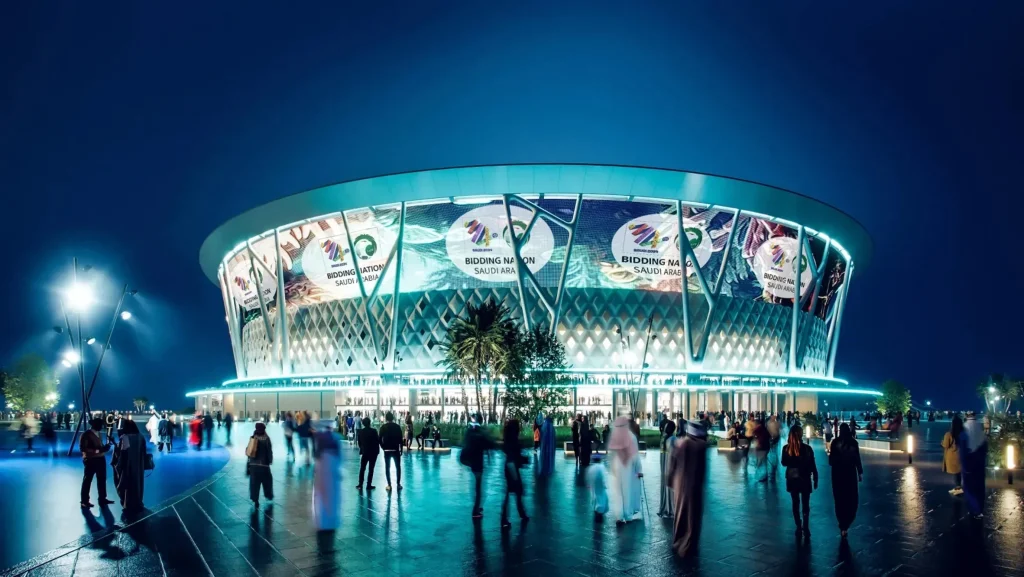
Planned for completion in 2032, the King Abdullah Economic City Stadium in Jeddah will accommodate 45,700 spectators. It will be a venue for the Round 32 matches in the 2034 World Cup. The stadium is designed to offer advanced facilities and a vibrant atmosphere, reflecting Saudi Arabia’s commitment to hosting a successful tournament.
Aramco Stadium
Saudi Aramco has partnered with Belgian contractor BESIX and local Albawan to construct a new football venue, Aramco Stadium, which will undergo refurbishment and be ready by 2026. With a capacity of 46,096, it will host Round of 16 matches during the 2034 World Cup. The refurbishment will enhance the stadium’s infrastructure and fan amenities, ensuring it meets international standards.
Additionally, Foster + Partners will serve as the project consultant for the project. The building will comprise temporary office buildings alongside other related facilities.
King Khalid University Stadium
Located in Abha, the King Khalid University Stadium will be ready by 2032. With a gross capacity of 45,428, it will host Round of 16 matches in the 2034 World Cup. The stadium will combine modern design with functional sports facilities, providing an excellent venue for international football.
NEOM Stadium
The NEOM Stadium, planned for completion by 2032, will be located in NEOM and have a capacity of 46,010. It is set to host quarter-final matches during the 2034 World Cup. This futuristic stadium will feature cutting-edge technology and sustainable design, embodying the vision of NEOM as a hub of innovation and modernity.
“This new stadium (NEOM) will be the most unique in the world. With a pitch situated more than 350 meters above ground and a roof created from the city itself, the stadium will be an experience like no other. After the tournament, it will be home to a professional football club and the centerpiece of the city’s sporting and active lifestyle program,” the Saudi Arabia 2034 bid for NEOM Stadium stated.
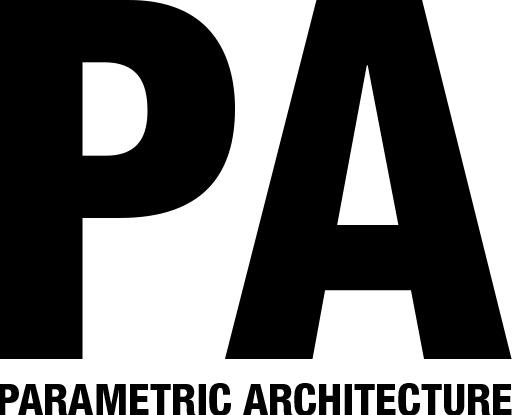




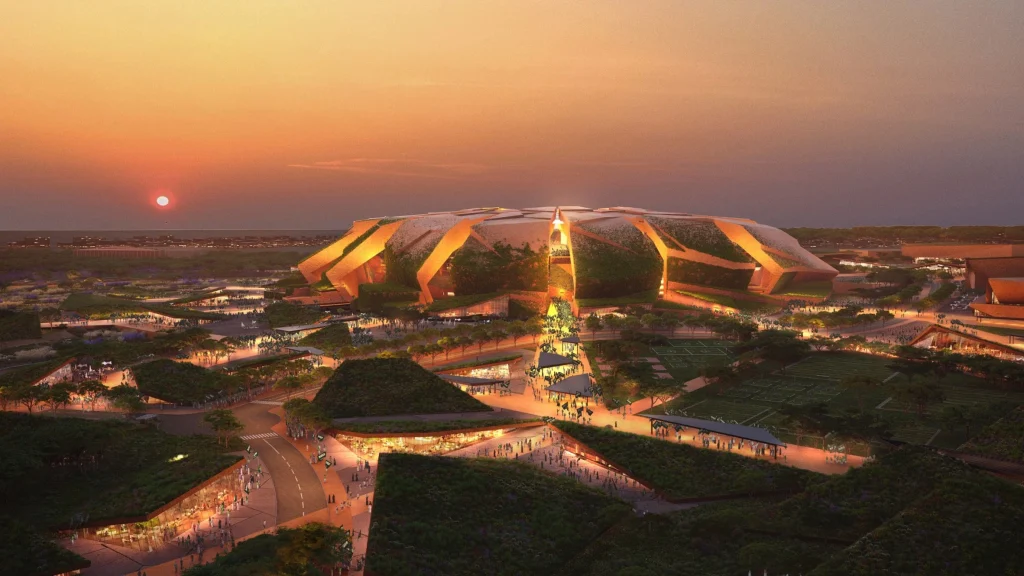
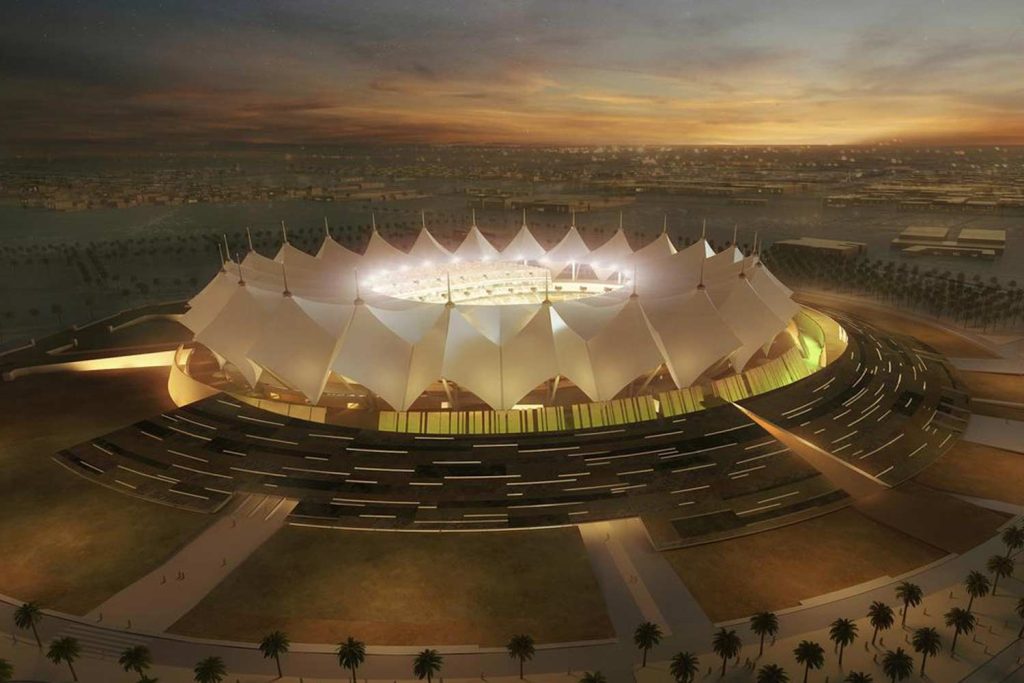
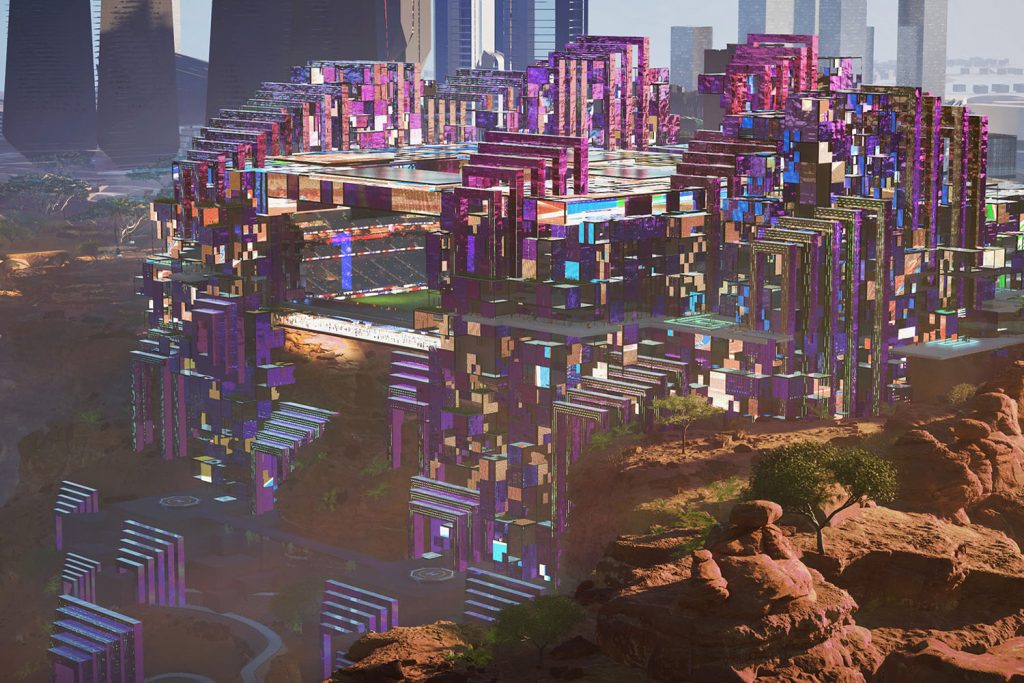
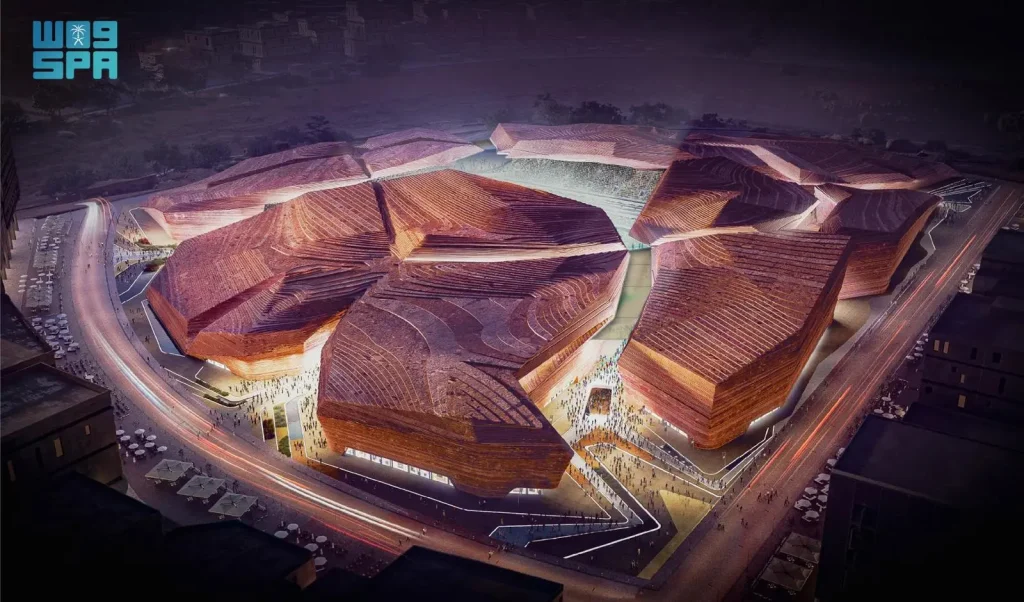
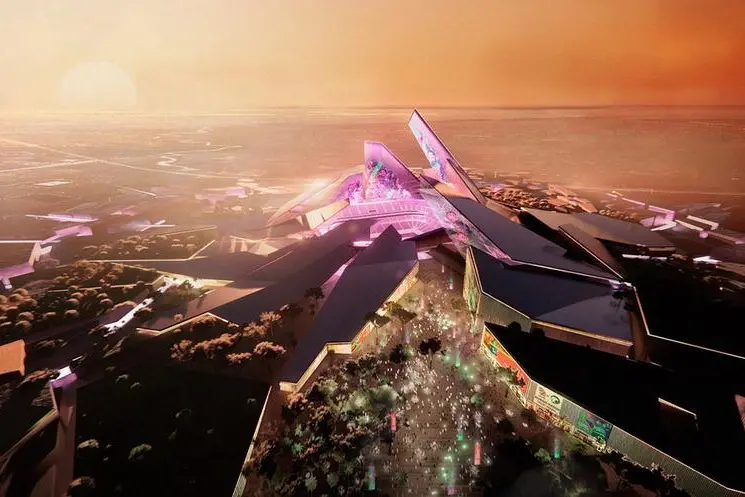
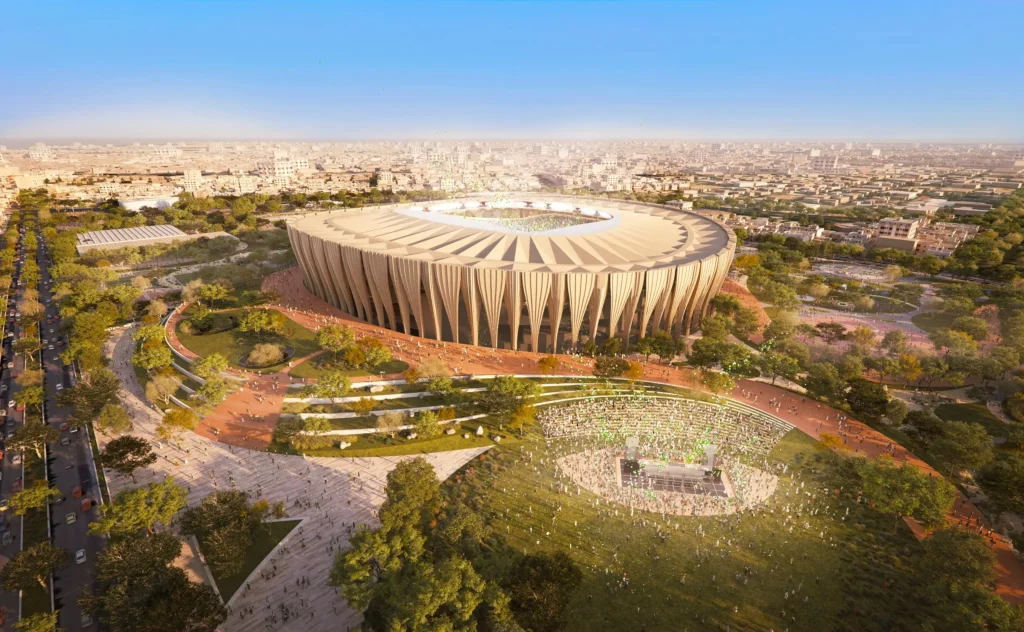
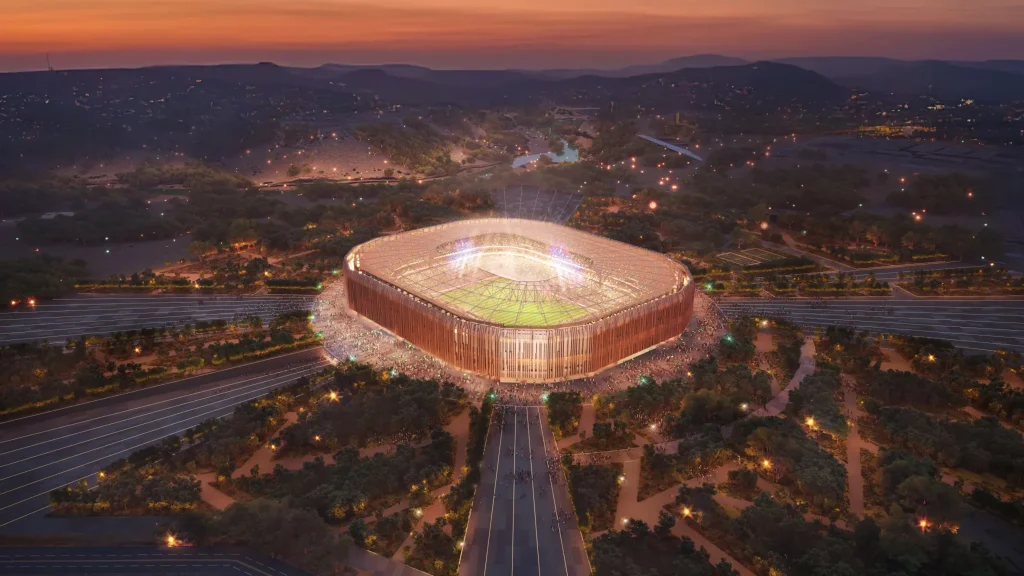
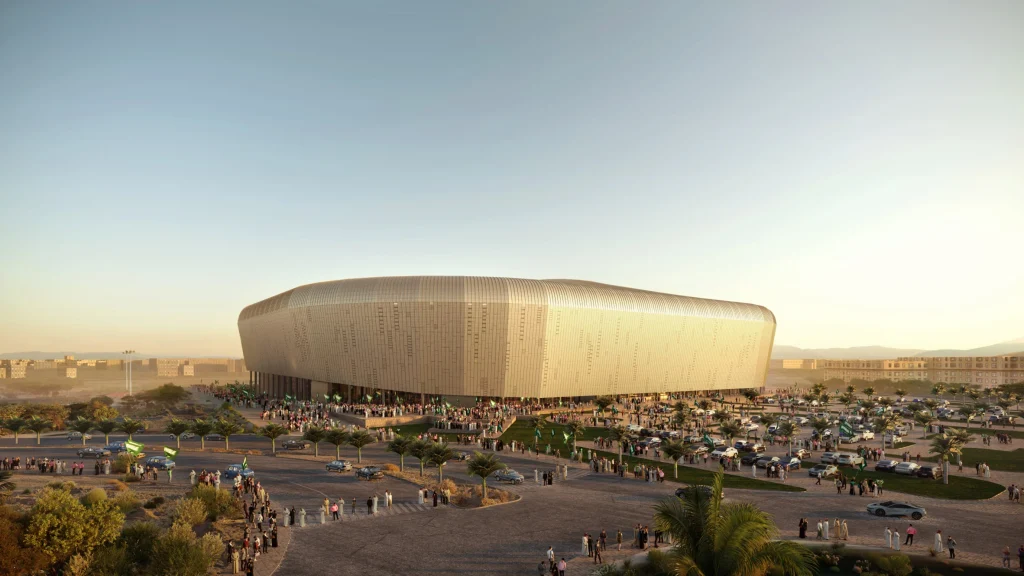
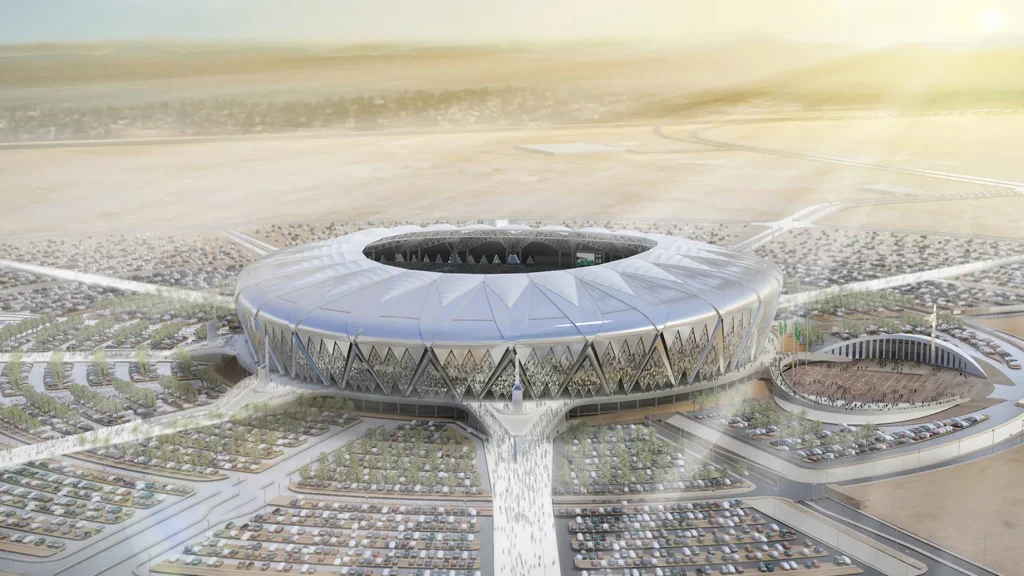
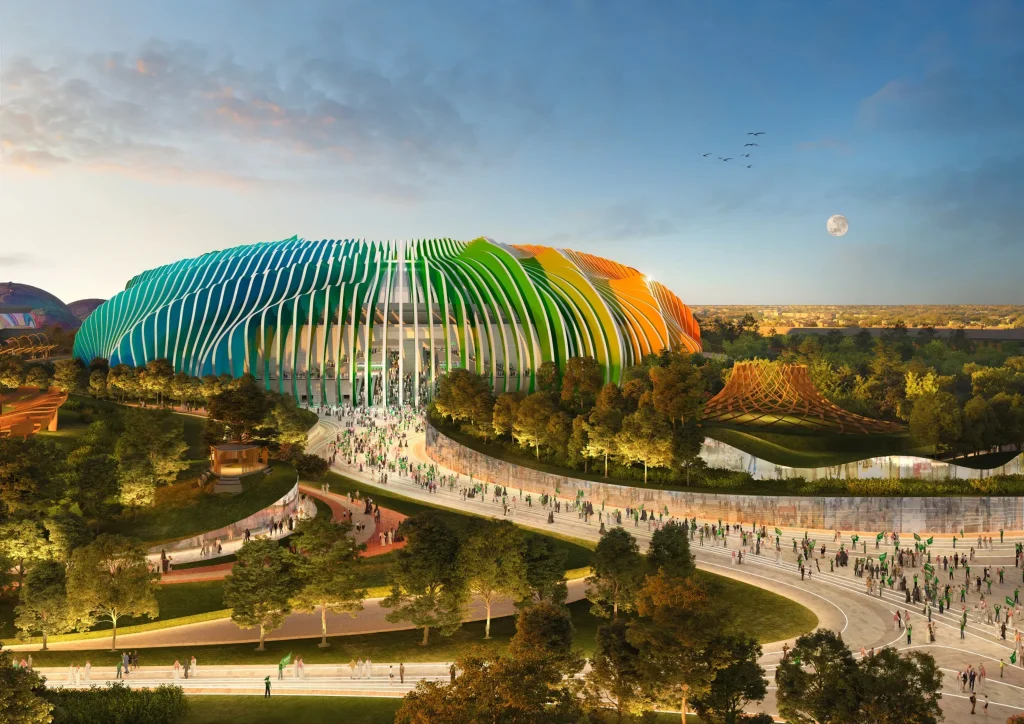
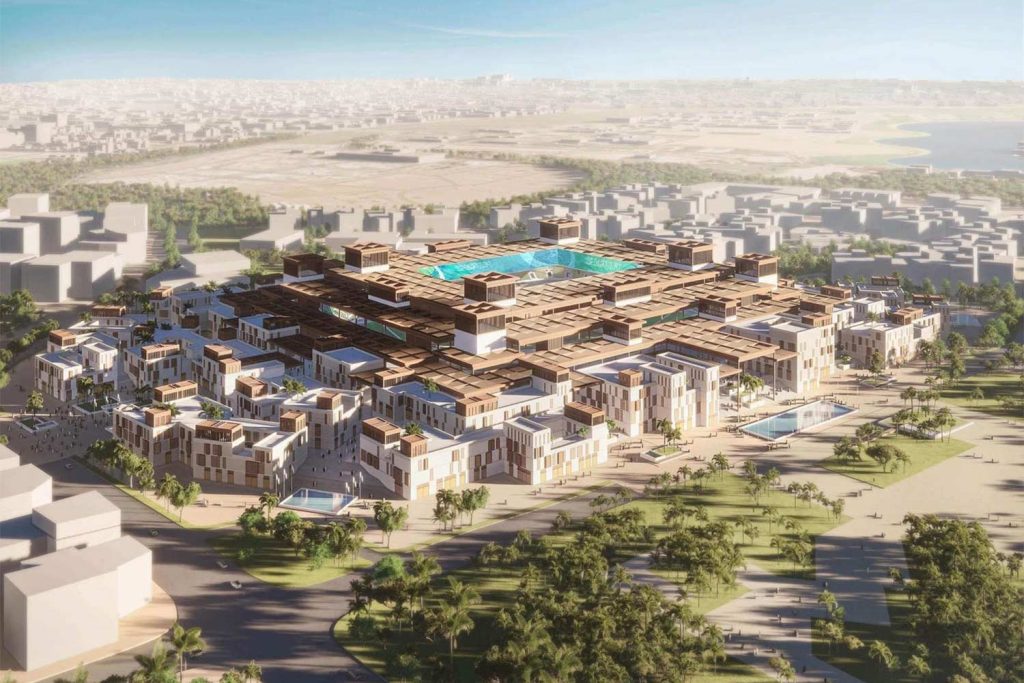
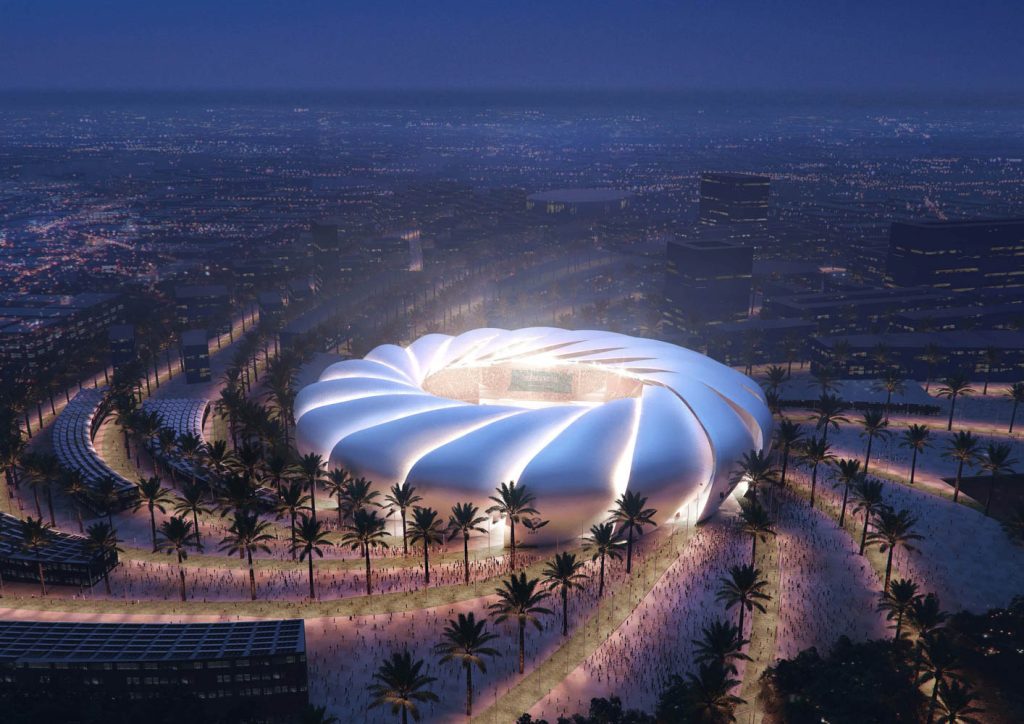
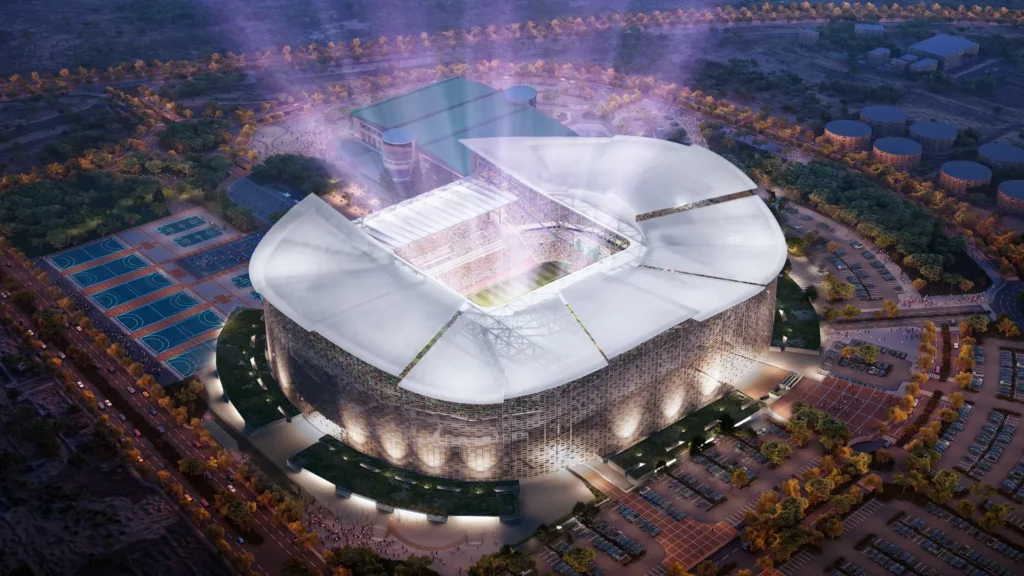
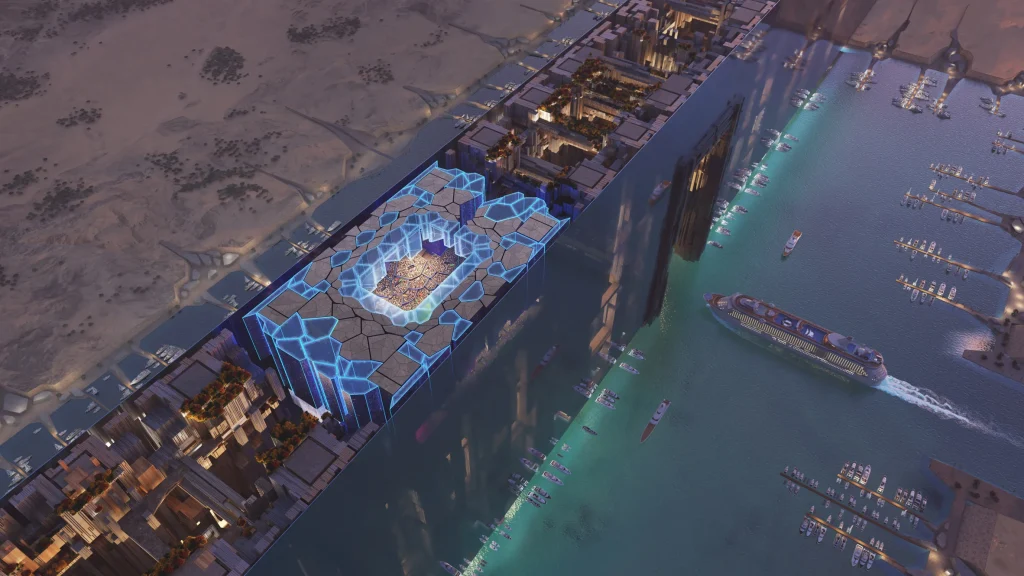

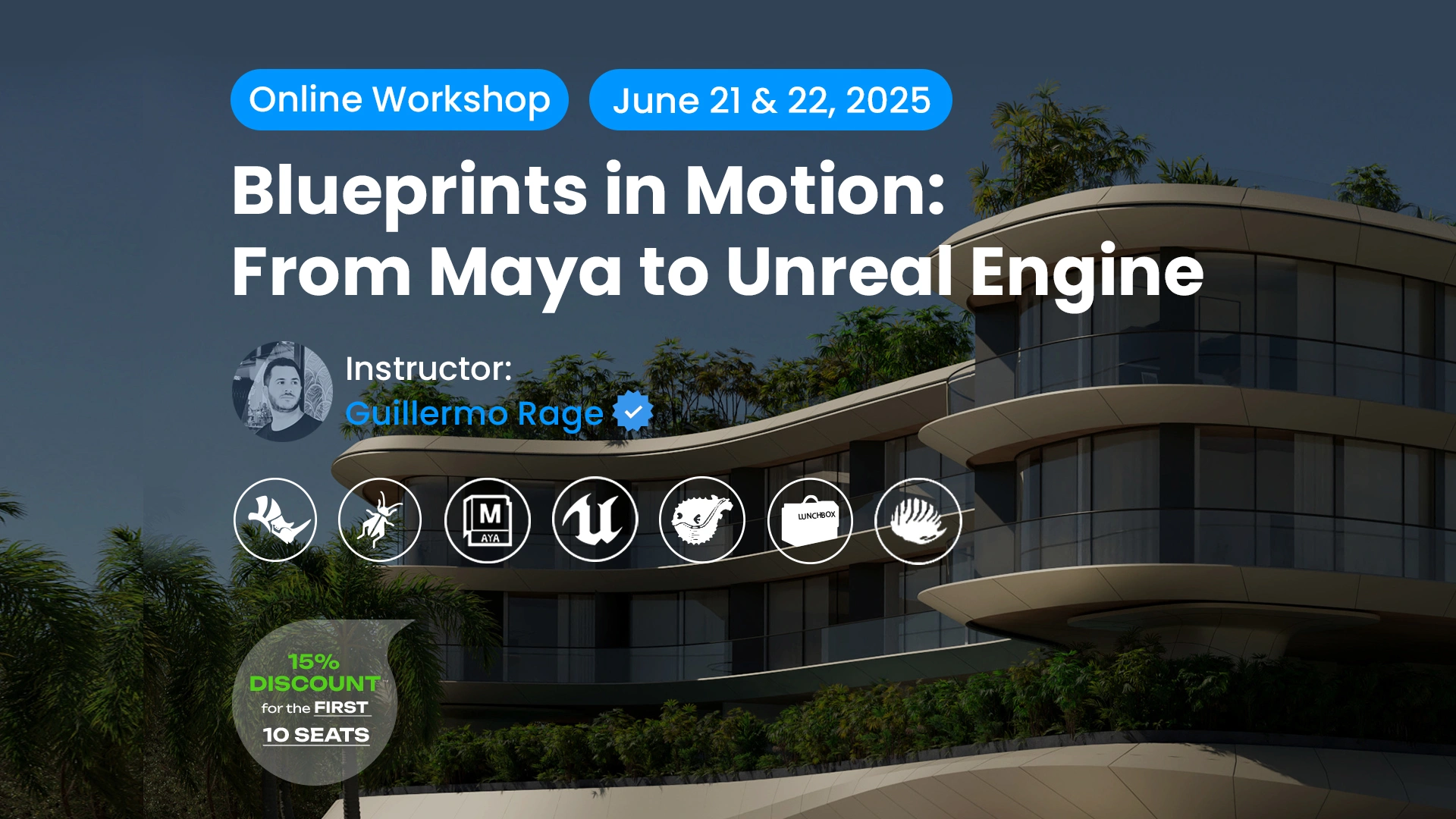

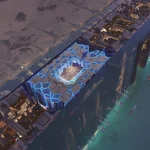
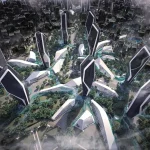









Leave a comment